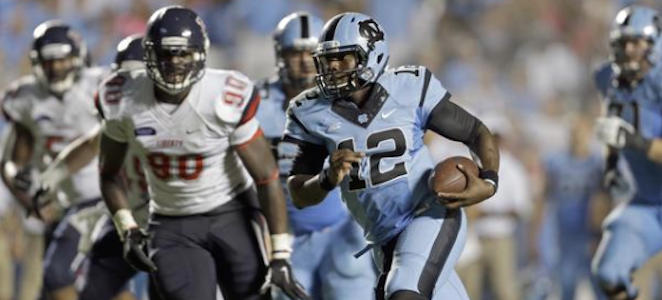Every year, fans of major college football programs can almost always point to their favorite team’s schedule and identify at least one “automatic” win. The cupcake games usually make for some of the less attractive matchups, but many teams count on those games to pad the win column. Those contests often make the difference when it comes to reaching or falling short of bowl eligibility, and some schools even go as far as scheduling two FCS opponents in a single season.
But what’s the incentive for FCS programs and low-level FBS squads to agree to games in which they’ll likely end up on the losing end of a blowout?
Program exposure, experience against high-end competition and, most importantly, a considerable pay day.
Power 5 schools are willing to pay big money to schedule games that usually result in easy wins, even if those matchups attract the fewest eyeballs. In 2013, ESPN reported that Big Ten teams paid their FCS opponents a combined $5 million in 2013. Last season, per ESPN, Ohio State alone paid over $2 million to get Virginia Tech, Kent State and Cincinnati to play nonconference games at Ohio Stadium.
While these contests often go as expected, with the home team cruising to victory, it’s certainly not unheard of for the strategy to backfire.
Not only did the Hokies collect $350,000 for their trip to Columbus, but they also claimed a 35-21 win over the Buckeyes. Most people remember Appalachian State’s legendary 34-32 upset win at Michigan in 2007, but what they may not know is that the Wolverines paid the Mountaineers $400,000 to play that game. Pittsburgh opened the 2012 season with a 14-point loss to Youngstown State, handing a $400,000 check to the Penguins afterward, and Florida handed $550,000 over to Georgia Southern in 2013 only to suffer one of the program’s most embarrassing losses in recent memory.
Although the worst-case scenario can make for a giant black eye, every victory can prove to be crucial down the road. In 2014, four ACC schools — Miami, North Carolina, Pittsburgh and Virginia Tech — finished with the minimum number of regular-season wins for bowl eligibility, and all four of those teams had wins over an FCS opponent.
Financially, that makes a major difference. The four bowl games those programs played in earned the ACC more than a combined $4 million in bowl revenue.
Unsurprisingly, several ACC athletic departments are reaching deep into their pockets for these nonconference meetings. According to Fox Sports, Florida State paid Murray State $450,000 in 2012, and the Orlando Sentinel reported that the Seminoles forked over $600,000 to Nevada — an FBS program — in 2013. A year ago, ESPN reported that NC State wrote Georgia Southern a $700,000 check to get the Eagles, who were in their first year at the FBS level, to come to Carter-Finley Stadium for a contest that turned out to be a nail-biter. North Carolina also dodged a bullet during the 2014 season when it escaped with a four-point victory over FBS foe San Diego State. It cost the Tar Heels $950,000 to get the Aztecs to travel to Chapel Hill.
While fans aren’t always ecstatic about these matchups, major college football teams aren’t going to stop scheduling cupcakes anytime soon. According to multiple reports, Boston College will pay Maine $400,000 for a date this fall, and Buffalo will travel to Chestnut Hill in 2016 with a price tag of $700,000.
In recent years, Clemson has successfully found a way to schedule beatable nonconference foes without spending nearly seven figures. Since 2007, the Tigers have hosted at least one in-state FCS opponent per year, which has kept costs down. According to The Post and Courier, Clemson has paid 15 FCS opponents over the last eight years an average of $276,666 per game.
There’s no doubt that ACC programs will continue to spend big on these types of games, but the frequency of these matchups will likely vary from school to school. Starting in 2017, league teams will be required to schedule at least one nonconference game against a Power 5 opponent (Notre Dame and BYU would also qualify as Power 5-level opponents).
Under the new rules, some schools may scramble to lighten the load outside of a lone nonconference game against a major program and look for surefire wins more often. Others — particularly teams competing for a College Football Playoff berth — may avoid scheduling too many low-level opponents so that their resume will stand out toward the end of the season.
Overall, it’s unlikely the new rules will prompt a significant change. NC State is the only team in the conference whose 2015 schedule wouldn’t meet the requirements in 2017 and beyond.
In a world where fanbases demand instant results and all coaches have short leashes, even the nation’s best programs will continue to pay up for a shot at an easy victory. For the foreseeable future, ACC schools will be no exception.

















